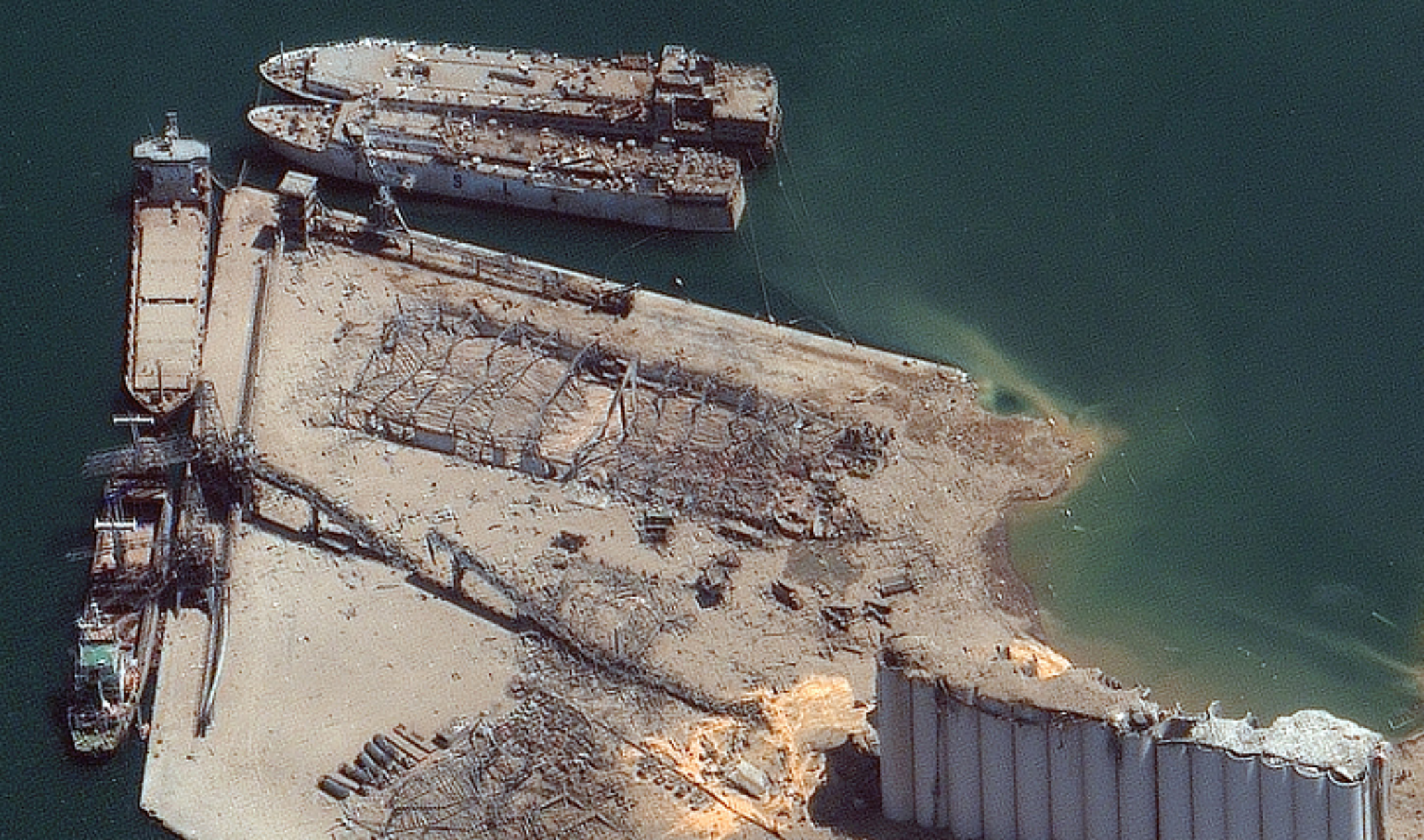Beirut explosions cause devastating damage to port and city centre
The devastating explosion in Lebanon’s capital on Tuesday 4 August was apparently equivalent to a magnitude 3.3 earthquake said the U.S. Geological Survey ("USGS") in a report available here .
As of Sunday 9 August, the explosion tragically resulted in at least 158 fatalities, more than 6,000 injuries and caused widespread damage across a large area of the city. Much of the port has been totally destroyed with damage to buildings up to 5km from the port.
News reports state the explosion was caused by 2,750 tons of ammonium nitrate (roughly equivalent to 1,100 tons of TNT) which had been stored since 2013 after being removed from a Russian-owned cargo vessel. Quite what triggered the explosion is not yet known but it could have been smaller fires and explosions within the warehouse.
Comparisons between the Beirut explosion and the one in August, 2015 in Tianjin which was also caused by ammonium nitrate (800 tons of ammonium nitrate equivalent to 75 tons of TNT) have been drawn in terms of the radius of the impact and the strength of the blast. Unfortunately, as with Tianjin and Toulouse in 2001, the Beirut explosion occurred in a densely populated, very built up region and so the human and economic impact will be considerable.
The Governor of Beirut estimated that the economic impacts would be in the region of USD 10-15bn. According to a Reuters report available here the insured losses are likely to total around $3 billion. Guy Carpenter's Cat-I Bulletin of 7 August, comments "property insurance levels remain relatively low in Lebanon, despite recent market penetration. The penetration for industrial exposures near the port and for commercial lines will be higher, which could impact some of the international insurance market. Guy Carpenter expects to obtain further building level damage assessment data early next week, which will assist clients with identification and estimation of their losses."..."There is still much uncertainty and speculation on the quantum of the insured loss. Guy Carpenter does not yet have its own full estimate."
European reinsurer Hannover Re has described Beirut as likely to be a "major loss" for it (greater than €10m) and news sources expectations are that other global reinsurers will have their share of the insured loss as well as local insurers and specialty insurers.
It is marine and accumulations of cargo exposures that are a major concern with cargo and freight inevitably destroyed in the port as well as a number of vessels in the vicinity. These will inevitably be picked up in the London market including Lloyd's.
The international loss adjusters Crawford comment on their website:
"The media reports do not adequately convey the scale of the devastation caused by one of the world’s largest explosions. We have been advised of damage to a shopping mall at approx. 5 km from the explosion where shop fronts have been destroyed. ...Our adjusters are at the site today which is approximately 2 km from the centre of the explosion. Damage there is extensive with all of the windows being blown out, suspended (false) ceilings collapsed and internal partitioning knocked over damaging contents.
"The Port area where the explosion occurred is heavily populated with a mixture of commercial property, hotels, shops and residences and we expect to see structural damage in addition to blast damage to the lighter elements of building construction.
"Beirut has a narrow “coastal strip” which is densely populated with steep hills surrounding the coastal strip. This rising ground would potentially expose more buildings to the shock wave from the blast as there is potentially limited “shadowing” where the shock wave could be dissipated by the local topography.
"Access to the port is severely limited at this time but our marine experts are on standby to manage marine liability claims on behalf of London market insurers..."
We have posted on our Hampden LinkedIn page available here information from McKenzie Intelligence Services who produce useful satellite imagery for underwriters after catastrophe events such as these, comparing Beirut’s port area before and after the explosion.
Footnotes: The Tianjin explosion affected the 2015 Account by less than 1% of PIL and the insured losses were US$2.5bn – 3.5bn.
On its own ammonium nitrate is not considered dangerous. The following is an extract from a Swiss Re article: "Ammonium nitrate serves as a source of nitrogen in agricultural production, and has an irreplaceable role; for this reason, it is widely used; it is also widely used as an explosive in the mining industry and is stored in large quantities.
"Under normal circumstances, ammonium nitrate is stable and does not explode easily. However, it could explode under high-temperature and high-pressure....The separate storage of AN is considered essential to prevent it exploding if other combustible materials are present."
According to Livescience.com: "Ammonium nitrate is frequently added to increase a fertilizer's nitrogen content. It's relatively stable under most conditions and is inexpensive to manufacture, making the chemical a popular alternative to other, more expensive nitrogen sources.
